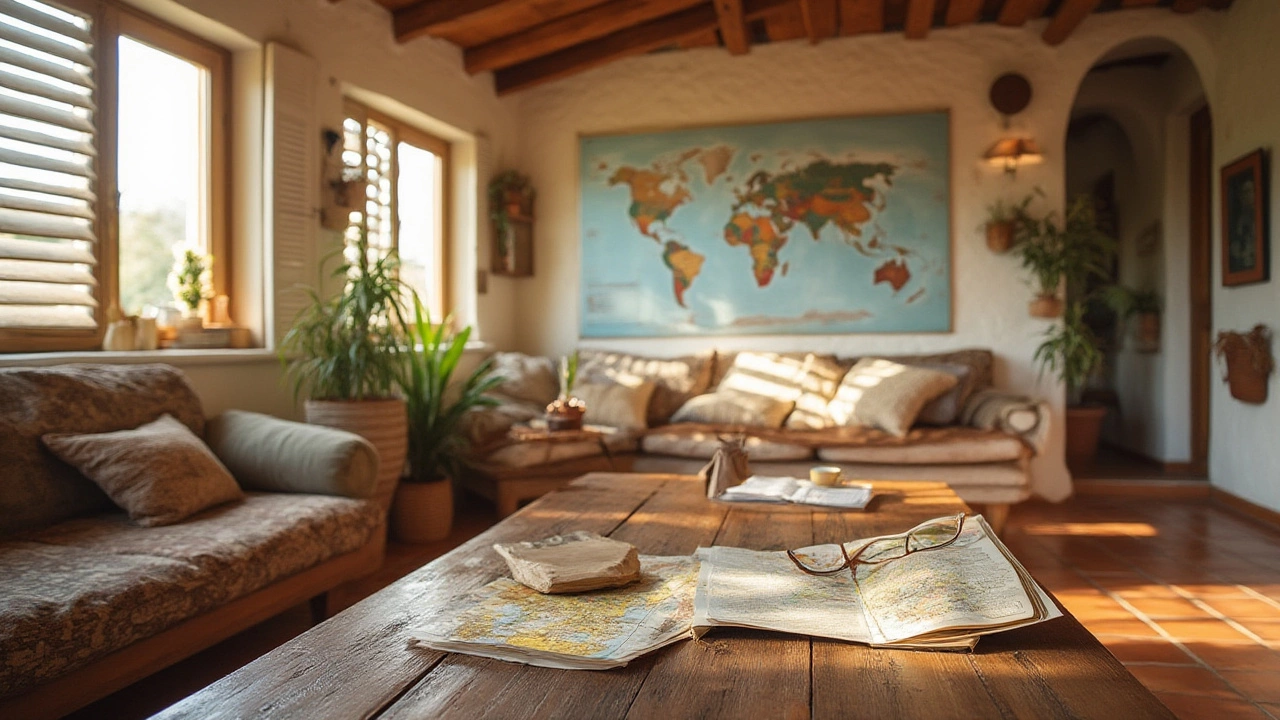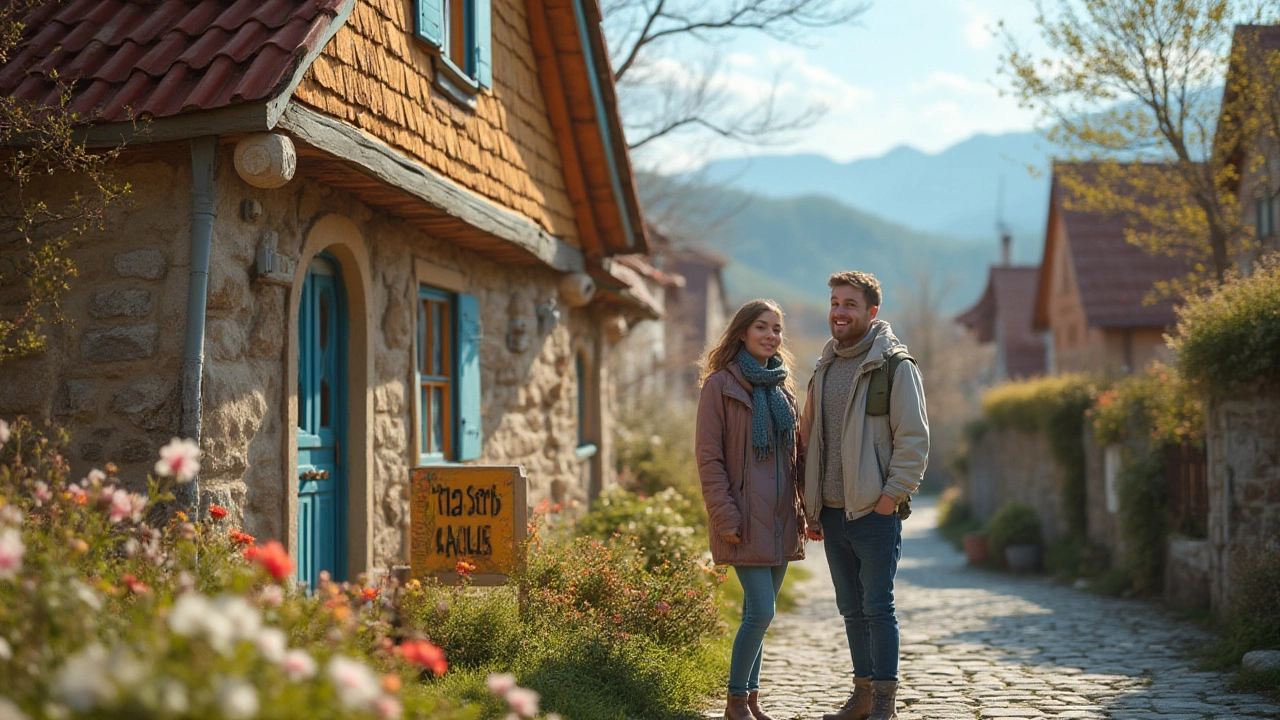Picture this: You’ve got $50,000 in your pocket and dreams of home ownership tugging at your sleeve. Forget the doom-and-gloom headlines about runaway property prices—there are corners on this planet where a modest chunk of change still unlocks not just a roof and four walls, but maybe a pizza oven, grapevine, or a view so pretty your friends will think you’re kidding. Yes, it still happens in 2025. House prices in some places are downright achievable, if you know where to look and what trade-offs to accept.
Understanding the $50,000 Home Dream
The idea of buying a house for $50,000 sounds nearly mythical if you live in London, Sydney, or San Francisco. Yet, the world is big, and housing markets are vastly different depending on country, economy, and demand. Often, the places boasting sub-$50k price tags tend to be outside major cities, but there are exceptions. So, how is this possible? In countries where population decline meets slow economic growth—think rural Eastern Europe, parts of South America, or fading industrial towns in the US—there’s less competition, less demand, and sometimes an urgent wish to attract newcomers. Locals may have headed for bigger cities, leaving behind sturdy, if sometimes neglected, homes. The result? You, with modest savings, can suddenly afford what city folks might only dream about—a house, maybe even with land, for under $50,000.
Of course, we’re not talking about penthouses with infinity pools. These homes might need some love or creative touches, especially if your Instagram feed requires aesthetic upgrades. Many times, the low headline price is just the start. Extras like repairs, legal fees, and maybe a new roof could up your budget by 10-20%. But even then, you’re still lightyears ahead of a mortgage in London or Toronto.
Many countries are seeing younger folks leap at these opportunities. There are even government incentives in Bulgaria, Hungary, and Portugal, aiming to revive rural life with new homeowners. Remote work has also supercharged the trend: If you can work from anywhere, why not somewhere cheap and character-filled?
Hidden Gem Locations: Where $50,000 Goes Far
This is where things get fun. The best places to find a cheap house are usually outside the limelight. In 2025, Eastern Europe is a treasure trove of homes between $20,000 and $50,000. Take Bulgaria—especially villages near Plovdiv or Veliko Tarnovo, where houses with gardens easily fall under that mark. Properties here often feature big gardens, old fruit trees, sometimes grape arbors out back. Quite a few expats have already rediscovered the countryside, feeding a small-but-steady flow of renovation tales shared online.
Next, let’s talk about Italy’s famous €1 houses. While most of the buzz hit a few years back, the project hasn’t vanished. More realistically, there are real houses in Sicily and other southern regions listed for €20,000–€50,000, often needing updates but structurally sound. Some towns—like Mussomeli or Troina—now offer renovated homes in this price range, hoping to lure buyers who want less hassle. Beyond Europe, parts of Latin America quietly deliver. In Ecuador’s Loja or parts of Uruguay, older homes and cottages sometimes land squarely in your price range. The same goes for small Argentine towns and even pockets of Peru and Mexico (think less touristy highlands, not beach resorts). In Asia, Indonesia and rural Thailand offer a few deals, though foreigners face restrictions on land ownership in some places, so that’s worth a legal double-check. Even in the United States, certain Midwest or Southern cities (like Detroit, Cleveland, or Buffalo) still have fixer-uppers, though competition and costs are rising.

What Kind of Homes Can You Actually Get for ,000?
Let’s set expectations. You won’t get a villa overlooking the Mediterranean for $50k. But you might wake up to sunrise over olive groves in rural Greece or enjoy a grape-laden arbor behind a brick cottage in Bulgaria. Houses at this price usually offer one or two bedrooms, sometimes with a bit of land or a rambling backyard. Most are older—think stone walls, red tile roofs, or even a baker’s oven tucked in back. Occasionally, you’ll find apartments or condos, especially in post-Soviet towns throughout Central and Eastern Europe. These are often in need of major upgrades, but can be transformed with patience and some DIY spirit. If you land a house in rural Spain or Portugal, it might be perfectly livable from the start—or it might need basic plumbing and electrics upgraded. That’s the trade-off. Don’t expect luxury. Heating can be basic, especially in Eastern Europe. Air conditioning? Unlikely. One English expat in rural Hungary found her $40,000 farmhouse was as charming as she hoped, but did require a few creative fixes—like a makeshift rainwater tank and solar panels hooked up after the first winter. Still, her total investment stayed under $50,000. If renovation isn’t your thing, your best shot is finding something called a “turnkey” home: move-in ready, with modern utilities and repaired roofs. These pop up as small apartments in secondary cities—think towns outside Budapest, Sofia, or in Romanian countryside. You’ll sacrifice city-life perks, but gain space and peace. Many buyers discover the culture is part of the charm; a bakery on the corner, a neighbor with chickens, and festivals you never knew existed—these are your new normal in places where homes cost what some spend on a year of rent in big cities.
Traps, Pitfalls, and How to Avoid Them
There’s always a catch, right? Cheap houses can be tempting, but you want to avoid expensive surprises. Here’s a breakdown of the main traps people stumble into. First, legal issues. Countries like Bulgaria and Romania offer great bargains, but rules about foreign ownership change often. In Italy, expect bureaucracy: it’s manageable, but you’ll juggle paperwork in Italian and deal with local plumbers, electricians, and officials who may work on their own (slow) schedules. Next, renovations can cost more than you think. A recent UK survey of people who bought overseas homes on the cheap reported that a third went over budget by 30% or more, especially when dealing with unforeseen structural fixes. So, always budget extra for repairs and factor in the cost of trusted local tradespeople. Don’t skip the home inspection—a local expert will spot leaks, foundation cracks, or termite issues that could sink your dream. Dealing with currency exchange is another sneaky pitfall. Big swings in exchange rates can mean a house you thought was $49,000 jumps to $55,000 or drops to $42,000 in a month. Consider locking in your rate or using services that give you better deals than your everyday bank. Lastly, check property taxes and utilities. Even countries with low-cost homes can have higher taxes or utility rates depending on the region. Make sure you know what you’re signing up for before handing over a deposit.

Smart Tips for International House Hunting on a Budget
Ready to house-hunt? Here’s how to make that $50k dream work. First, do your research online. Local property websites or expat forums are goldmines for real deals, not just the ones pumped by agents. Talk to people on the ground. Many buyers find their best bargains by word of mouth—neighbors, builders, or shopkeepers often know when properties are coming up for sale.
Travel to see the house in person. Photographs can be deceiving—a cute cottage might back onto a noisy freeway or need more than a coat of paint. Visit at different times to get a feel for the area. If you can, spend a night in the town and chat to locals. Renting before buying gives you a sense of place without big commitments.
Find a reliable translator or bilingual lawyer if you’re not fluent in the local language. They’ll guide you through contracts and make sure you understand every clause, especially limits on foreign ownership.
A lot of affordable homes are sold via auction or direct negotiation with the owner. Auctions can be intense. Check viewing schedules well advance and set a strict upper limit for your bid. Don’t get carried away—there’s always another deal.
Finally, get creative. Split costs with a friend or join a co-op if you want to lower the buy-in. Or, make use of that backyard—many buyers have turned their outdoor space into gardens, small farm plots, or even B&B rooms for extra income. In the right spot, your $50k can kickstart a life you never imagined—one filled with fresh starts, unexpected friends, and a story worth telling back home.
What's clear is that buy a house for 50k isn’t a fantasy. The world is packed with overlooked homes, quiet towns, and communities excited to welcome new faces. All it takes is a willingness to step off the well-worn path, do your homework, and say yes to a little adventure under your own roof.
